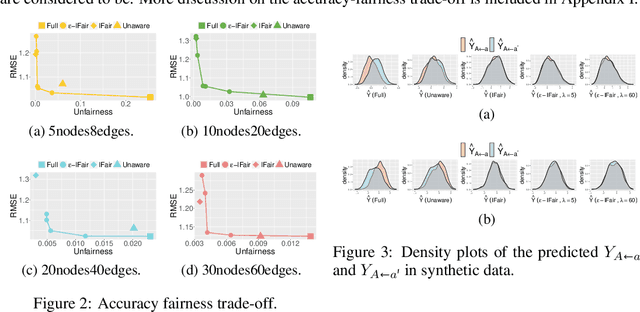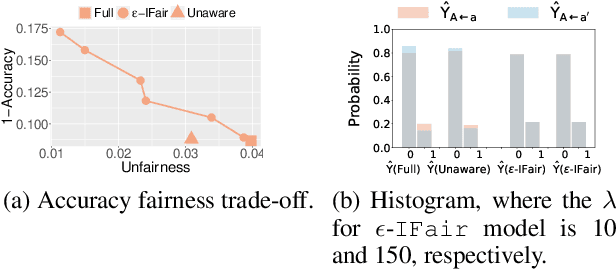Yiqing Li
Fast and robust parametric and functional learning with Hybrid Genetic Optimisation (HyGO)
Oct 10, 2025Abstract:The Hybrid Genetic Optimisation framework (HyGO) is introduced to meet the pressing need for efficient and unified optimisation frameworks that support both parametric and functional learning in complex engineering problems. Evolutionary algorithms are widely employed as derivative-free global optimisation methods but often suffer from slow convergence rates, especially during late-stage learning. HyGO integrates the global exploration capabilities of evolutionary algorithms with accelerated local search for robust solution refinement. The key enabler is a two-stage strategy that balances exploration and exploitation. For parametric problems, HyGO alternates between a genetic algorithm and targeted improvement through a degradation-proof Dowhill Simplex Method (DSM). For function optimisation tasks, HyGO rotates between genetic programming and DSM. Validation is performed on (a) parametric optimisation benchmarks, where HyGO demonstrates faster and more robust convergence than standard genetic algorithms, and (b) function optimisation tasks, including control of a damped Landau oscillator. Practical relevance is showcased through aerodynamic drag reduction of an Ahmed body via Reynolds-Averaged Navier-Stokes simulations, achieving consistently interpretable results and reductions exceeding 20% by controlled jet injection in the back of the body for flow reattachment and separation bubble reduction. Overall, HyGO emerges as a versatile hybrid optimisation framework suitable for a broad spectrum of engineering and scientific problems involving parametric and functional learning.
GUI-ARP: Enhancing Grounding with Adaptive Region Perception for GUI Agents
Sep 19, 2025Abstract:Existing GUI grounding methods often struggle with fine-grained localization in high-resolution screenshots. To address this, we propose GUI-ARP, a novel framework that enables adaptive multi-stage inference. Equipped with the proposed Adaptive Region Perception (ARP) and Adaptive Stage Controlling (ASC), GUI-ARP dynamically exploits visual attention for cropping task-relevant regions and adapts its inference strategy, performing a single-stage inference for simple cases and a multi-stage analysis for more complex scenarios. This is achieved through a two-phase training pipeline that integrates supervised fine-tuning with reinforcement fine-tuning based on Group Relative Policy Optimization (GRPO). Extensive experiments demonstrate that the proposed GUI-ARP achieves state-of-the-art performance on challenging GUI grounding benchmarks, with a 7B model reaching 60.8% accuracy on ScreenSpot-Pro and 30.9% on UI-Vision benchmark. Notably, GUI-ARP-7B demonstrates strong competitiveness against open-source 72B models (UI-TARS-72B at 38.1%) and proprietary models.
TGPO: Tree-Guided Preference Optimization for Robust Web Agent Reinforcement Learning
Sep 19, 2025Abstract:With the rapid advancement of large language models and vision-language models, employing large models as Web Agents has become essential for automated web interaction. However, training Web Agents with reinforcement learning faces critical challenges including credit assignment misallocation, prohibitively high annotation costs, and reward sparsity. To address these issues, we propose Tree-Guided Preference Optimization (TGPO), an offline reinforcement learning framework that proposes a tree-structured trajectory representation merging semantically identical states across trajectories to eliminate label conflicts. Our framework incorporates a Process Reward Model that automatically generates fine-grained rewards through subgoal progress, redundancy detection, and action verification. Additionally, a dynamic weighting mechanism prioritizes high-impact decision points during training. Experiments on Online-Mind2Web and our self-constructed C-WebShop datasets demonstrate that TGPO significantly outperforms existing methods, achieving higher success rates with fewer redundant steps.
SparseGS-W: Sparse-View 3D Gaussian Splatting in the Wild with Generative Priors
Mar 25, 2025Abstract:Synthesizing novel views of large-scale scenes from unconstrained in-the-wild images is an important but challenging task in computer vision. Existing methods, which optimize per-image appearance and transient occlusion through implicit neural networks from dense training views (approximately 1000 images), struggle to perform effectively under sparse input conditions, resulting in noticeable artifacts. To this end, we propose SparseGS-W, a novel framework based on 3D Gaussian Splatting that enables the reconstruction of complex outdoor scenes and handles occlusions and appearance changes with as few as five training images. We leverage geometric priors and constrained diffusion priors to compensate for the lack of multi-view information from extremely sparse input. Specifically, we propose a plug-and-play Constrained Novel-View Enhancement module to iteratively improve the quality of rendered novel views during the Gaussian optimization process. Furthermore, we propose an Occlusion Handling module, which flexibly removes occlusions utilizing the inherent high-quality inpainting capability of constrained diffusion priors. Both modules are capable of extracting appearance features from any user-provided reference image, enabling flexible modeling of illumination-consistent scenes. Extensive experiments on the PhotoTourism and Tanks and Temples datasets demonstrate that SparseGS-W achieves state-of-the-art performance not only in full-reference metrics, but also in commonly used non-reference metrics such as FID, ClipIQA, and MUSIQ.
Interventional Fairness on Partially Known Causal Graphs: A Constrained Optimization Approach
Jan 19, 2024



Abstract:Fair machine learning aims to prevent discrimination against individuals or sub-populations based on sensitive attributes such as gender and race. In recent years, causal inference methods have been increasingly used in fair machine learning to measure unfairness by causal effects. However, current methods assume that the true causal graph is given, which is often not true in real-world applications. To address this limitation, this paper proposes a framework for achieving causal fairness based on the notion of interventions when the true causal graph is partially known. The proposed approach involves modeling fair prediction using a Partially Directed Acyclic Graph (PDAG), specifically, a class of causal DAGs that can be learned from observational data combined with domain knowledge. The PDAG is used to measure causal fairness, and a constrained optimization problem is formulated to balance between fairness and accuracy. Results on both simulated and real-world datasets demonstrate the effectiveness of this method.
IEEE 802.11be Wi-Fi 7: Feature Summary and Performance Evaluation
Sep 27, 2023



Abstract:While the pace of commercial scale application of Wi-Fi 6 accelerates, the IEEE 802.11 Working Group is about to complete the development of a new amendment standard IEEE 802.11be -- Extremely High Throughput (EHT), also known as Wi-Fi 7, which can be used to meet the demand for the throughput of 4K/8K videos up to tens of Gbps and low-latency video applications such as virtual reality (VR) and augmented reality (AR). Wi-Fi 7 not only scales Wi-Fi 6 with doubled bandwidth, but also supports real-time applications, which brings revolutionary changes to Wi-Fi. In this article, we start by introducing the main objectives and timeline of Wi-Fi 7 and then list the latest key techniques which promote the performance improvement of Wi-Fi 7. Finally, we validate the most critical objectives of Wi-Fi 7 -- the potential up to 30 Gbps throughput and lower latency. System-level simulation results suggest that by combining the new techniques, Wi-Fi 7 achieves 30 Gbps throughput and lower latency than Wi-Fi 6.
 Add to Chrome
Add to Chrome Add to Firefox
Add to Firefox Add to Edge
Add to Edge